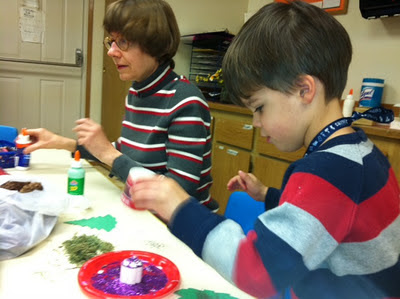 |
| The Storytime class hears the story of the Wise Men and the Elephant. |
Today’s story comes from our third source, lessons from the
world’s religions. We learn from many
cultures. This story is from the
religion of Buddhism.
Long, long ago there was a great teacher who told
stories. The name we give this teacher
is Buddha. It means enlightened
one. We call him that because his
stories can help us see things more clearly.
It is as if these stories bring light into a dark room.
One day the Buddha said “Truth! Truth is like this!”
There was a monarch who often wondered about the great
questions of life who decided one day to set up a test. An elephant was to be
brought into the throne room.
After the elephant was brought to the palace and into the
throne room the monarch gave a second order: the five wise people who taught at
the gates of the city were to be brought to the throne.
Each of the wise people happened to have been born
blind. The monarch had each wise person
placed near a different part of the elephant’s body. The first wise person was stood next to the
elephant’s ear.
The second wise person stood by the elephant’s tail.
The Monarch had the third wise person stand holding the
elephant’s tusk.
The monarch stood the fourth wise person right in front of
the elephant holding onto the elephant’s tusk.
The monarch then had the fifth and last wise person stand
touching one of the creature’s legs
Then the monarch issued the challenge. “You are each holding what we call an
elephant. Now tell me what an elephant
is like.”
The first wise person who was holding one of the elephant’s
large ears said, “An elephant is like a banana leaf.”
The second wise person was holding the elephant’s tail and
said, “No. No. No. An
elephant is like a paint brush.”
The third wise person was holding onto the elephant’s tusk
exclaimed, “They’re all wrong! An
elephant is like a plow made of metal, and sharpened to cut through the earth.”
The fourth wise person who was in front of the elephant
holding its’ trunk said, “Hear my words.
An elephant is like a great snake.”
The fifth and final wise person who was holding one of the
elephant’s legs declared, “I tell you an elephant is like the trunk of a giant
tree.” Before long the five blind wise
people began arguing with each other calling one another “Fool” and “Crazy.”
.
They fought and fought crying “An elephant is like a
tree.” “No it is like a fan.” “Any person with sense knows that an elephant
is like a plow.” “They are like paint
brushes.” “Elephants are like snakes.”
“This,” said the Buddha, “Is what truth is like.”
I wonder why each wise person named something different to
describe an elephant?
I wonder what they each thought when the others gave a
different answer?
I wonder if the elephant could be all these things?
I wonder what he meant…”this is what TRUTH is like”?
I wonder what TRUTH
means to you?
 |
Members of the Spirit Play and Creativity classes invented an animal-themed game following the story of the Wise Men and the Elephant.
|













































